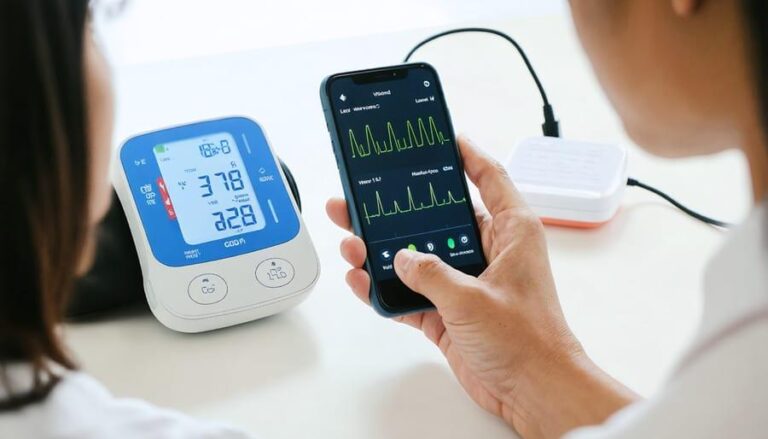in recent years, the landscape of chronic care management has been transformed by the advent of smart medical devices. These innovative tools, equipped with advanced sensors and connectivity features, are reshaping how patients and healthcare providers monitor and manage long-term health conditions. from continuous glucose monitors for diabetes to wearable cardiac devices that track heart rhythms in real time, smart medical technology offers unprecedented opportunities to enhance patient outcomes, improve quality of life, and reduce healthcare costs. In this article, we explore the multifaceted benefits of smart medical devices in chronic care, highlighting how they empower patients with greater control over their health while fostering more proactive and personalized medical interventions.
Table of Contents
- Advantages of Continuous Monitoring for Improved Patient Outcomes
- Enhancing Patient Engagement through Real-Time Data Access
- Integrating Smart Devices with Telehealth for Comprehensive chronic care
- Best Practices for Implementing Smart Medical Devices in Care Plans
- Key Takeaways
Advantages of Continuous Monitoring for improved Patient Outcomes
Continuous monitoring technologies empower healthcare providers with real-time data, enabling prompt intervention and reducing the risk of complications. By tracking vital signs and other critical health metrics around the clock, these smart devices provide a comprehensive picture of a patient’s condition, facilitating personalized treatment plans that evolve with the patient’s needs.This proactive approach minimizes hospital readmissions and enhances medication adherence, ultimately leading to more stable and manageable chronic conditions.
Among the many benefits are:
- Early detection of anomalies,allowing for timely medical response before issues escalate.
- Improved patient engagement through continuous feedback and alerts,fostering better self-management.
- Seamless data integration with electronic health records, streamlining interaction across care teams.
- Reduction in healthcare costs by preventing emergency visits and reducing the length of hospital stays.
Enhancing Patient Engagement through Real-Time Data Access
Access to real-time health data significantly empowers patients to take an active role in managing their chronic conditions. When patients can instantly view their metrics—such as blood glucose levels, heart rate, or medication adherence—they gain immediate insights into how lifestyle choices impact their health. This transparency fosters better understanding and helps patients make informed decisions,elevating their confidence and commitment to treatment plans. Moreover, the immediacy of data encourages timely interventions, reducing complications and hospital visits.
Health care providers also benefit greatly from this continuous data flow. Real-time monitoring enables physicians to detect subtle changes early,adjust therapies promptly,and personalize care more effectively. Through connected platforms, both patients and clinicians can collaborate seamlessly, sharing progress and insights. Key advantages include:
- Improved adherence to prescribed treatments through instant feedback
- Reduced emergency visits by catching warning signs early
- Enhanced communication and trust between patient and provider
- Empowerment through education as data visualizations clarify health trends
This continual engagement transforms traditional care into a dynamic partnership, essential for managing long-term chronic diseases successfully.
Integrating Smart Devices with Telehealth for Comprehensive Chronic care
The seamless integration of smart devices with telehealth platforms is transforming the landscape of chronic care management.By enabling real-time monitoring and instant data sharing, healthcare providers can now respond to patient needs promptly and accurately. This synergy allows for continuous health tracking without the constraints of traditional in-person visits, ensuring patients remain under vigilant supervision irrespective of their location. The combination optimizes treatment plans through personalized data insights, leading to improved clinical outcomes and enhanced patient engagement.
incorporating smart medical devices within telehealth frameworks delivers several key benefits:
- Improved Patient Compliance: Automated reminders and seamless data transmission encourage consistent use of medical devices and adherence to prescribed therapies.
- Early Detection of Complications: Continuous monitoring helps identify subtle changes in health status, facilitating timely interventions before conditions escalate.
- Cost Efficiency: Reducing the frequency of hospital visits and emergency care lowers healthcare expenses for both patients and providers.
- Enhanced Data Accuracy: Direct digital capture eliminates manual errors, ensuring reliable information for clinical decision-making.
together, these advantages foster a more proactive, patient-centered approach that elevates the quality and accessibility of chronic disease management.
Best Practices for Implementing Smart medical Devices in Care Plans
Integrating smart medical devices effectively requires a strategic approach centered on patient engagement and data accuracy. First, it is essential to select devices that are user-friendly and compatible with existing healthcare platforms, ensuring seamless data flow and ease of use for both patients and healthcare providers. Adequate training sessions should be conducted to empower patients and caregivers with the knowledge to operate devices correctly, minimizing errors and enhancing adherence to care protocols.Continuous support and troubleshooting services also foster sustained utilization, preventing device abandonment.
Additionally, safeguarding patient information through robust privacy and security measures is paramount. Implementing encrypted data transmission and adhering to healthcare regulations like HIPAA protect sensitive health data from breaches. Regular evaluation of device performance and integration outcomes enables care teams to adjust care plans responsively, optimizing clinical effectiveness. Key actions to consider include:
- Establishing clear communication channels between patients and providers
- Customizing device settings to individual health needs
- Monitoring data trends for proactive intervention
- Ensuring interoperability with electronic health records (EHRs)
These practices guarantee that smart medical devices truly enhance chronic care management rather than complicate it.
Key Takeaways
smart medical devices represent a critically important advancement in the management of chronic care, offering patients greater control, improved monitoring, and enhanced communication with healthcare providers. By integrating these technologies into daily routines, individuals living with chronic conditions can experience better health outcomes and an improved quality of life. As the healthcare landscape continues to evolve, embracing smart medical devices will be essential in delivering personalized, efficient, and proactive care for those who need it most. Staying informed and adopting these innovations can empower both patients and caregivers alike in the journey toward healthier living.

